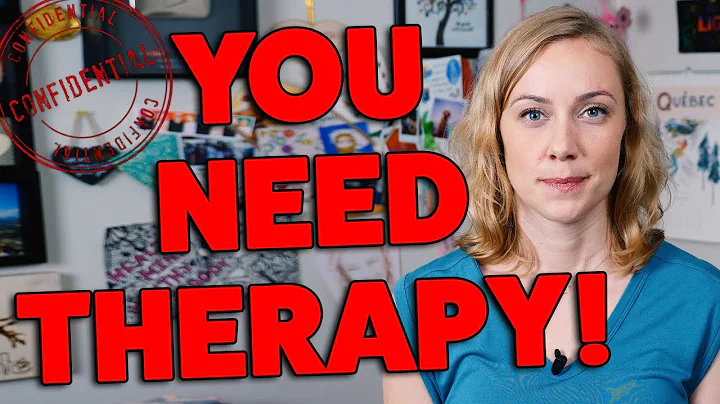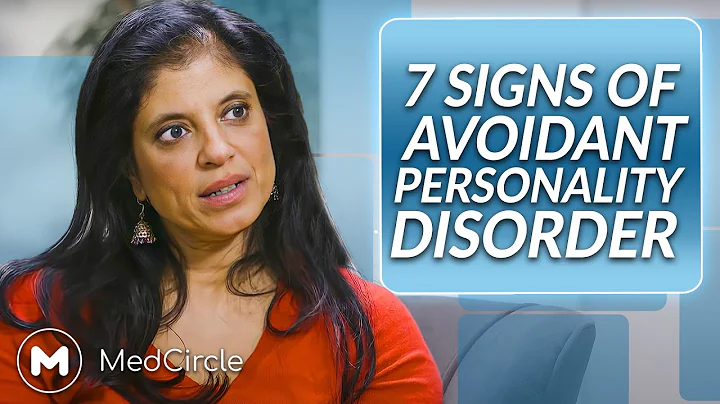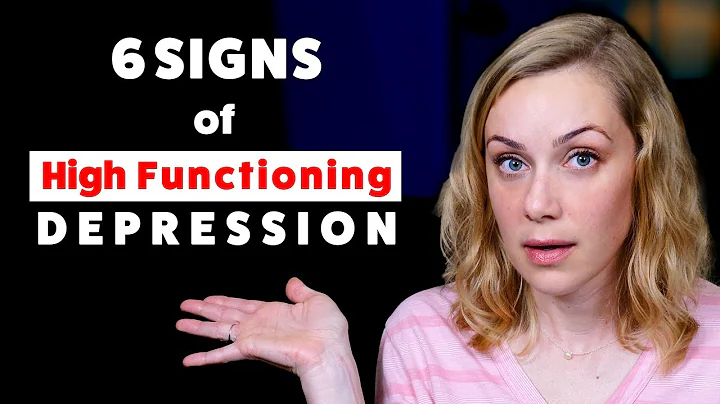

In the 1990s, based on the influence of cognitive psychology and cognitive behavioral therapy (CBT), emotional elements were regarded as appendix to the field of thinking, and traditional CBT theory that thinking affects behavior and feelings is becoming increasingly popular. Therefore, cognitive restructuring is included in the treatment of anxiety disorders, phobia, depression, and other psychological disorders, and a large number of standardized treatments have been developed, published and promoted in academic and clinical settings.
Surprisingly, in a 2001 study by Martell Christopher, Addis Michael and Jacobson Neil compared three different interventions for in patients with depression: standardized CBT (including behavioral intervention and cognitive intervention), behavioral activation (no cognitive reconstruction required), and drug treatment. The results show that although all three interventions are effective, there is an unexpected and significant finding: behavioral activation is as effective as drug therapy, but all are better than standardized CBT therapy. To avoid being questioned, they conducted two more studies and both came to the same conclusion.
The above research reflects two important significance: acknowledges that in the study, only focus on treatment results without understanding the limitations of changing vectors or drivers; it shows the limitations of cognitive reconstruction in treatment results . The third wave of
psychotherapy, such as dialectical behavioral therapy (DBTh), mindful cognitive therapy (MBCT), mindful stress relief therapy (MBSR), and acceptance-based behavioral therapy highlight the understanding that non-thinking processes such as empirical avoidance and emotional information processing are also intermediate variables that cause changes.
/01
Below, we will briefly review the most recognized treatment patterns, these theoretical research-based models emphasize the functional role of emotions; of course, I am absolutely serious about using the word "simple". I tried to review all the models with only two paragraphs, which is obviously a challenge, but the reader at least doesn't have to worry about how to deal with the vast amount of obscure academic terms that will appear in the next few pages! Marsha Linehan, the founder of
dialectical behavior therapy (DBT)
DBT, has made great contributions to understanding BPD and emotional regulation. She first reorganized the criteria for BPD in the Diagnostic and Statistical Manual of Mental Disorders, 3rd Edition (DSM-3) and redefined it as an emotional regulation problem with competency deficits in the following five areas: cognition, interpersonal relationships, emotional, behavioral disorders and self-disorders. This new clinical definition of BPD is clearly an important step toward eliminating the stigma of the disease, as many have long believed that patients with emotional regulation disorders will exhibit manipulative, irrational, performative or selfish characteristics, and that this condition is incurable.
Linnehan's understanding of emotional regulation has driven the spread of DBT, which she believes is not only in patients with BPD problems, but also in patients with other manifestations such as generalized anxiety disorder (GAD), repetitive behaviors targeting the body, eating disorders, substance abuse and psychological trauma. The effectiveness of using DBT in patients with mood regulation disorders is unquestionable.
Emotional Schema Therapy (emotional schema therapy)
Starting from the theory and practice of Aaron T.Beck, the founder of cognitive therapy, Robert Leahy, Dennis Tirch and Lisa Napolitano jointly proposed the emotional schema therapy model in 2011. They defined the model as "an emotional metacognitive model or emotional metaexperiment model that regards emotions as social cognition."

According to this model, they evaluated 14 emotional schema dimensions. The results showed that individuals had different cognitive understandings of emotional experience and adopted corresponding coping methods based on different types of reactions, including cognitive strategy (such as worrying, contemplation or blaming others), empirical avoidance (including distraction, avoidance, separation, numbness, alcoholism and depression) and other strategies. To this end, the three scholars proposed the following strategies for dealing with emotional schemas: recognition, verification, mindfulness , acceptance and willingness, empathy training, cognitive reconstruction, stress relief, and strengthening emotional information processing, etc.
Mindfulness and acceptance-based behavioral therapy
Acceptance-based therapy includes mindfulness-based stress reduction (MBSR), mindfulness cognitive therapy (MBCT), and ACT. The results they rely on suggest that revealing abnormal ways of relating to inner experiences, such as emotions, is also a central issue in psychopathology.
For example, some studies have shown that anxiety sensitivity (fear of anxiety experience) and empirical avoidance (avoidance of a certain thought, feeling, and emotion) are related to various psychological disorders such as anxiety, chronic pain, trauma, alcoholism, smoking addiction, eating disorders, borderline personality disorders and depression.
Emotional Regulation Therapy (ERT)
Douglas Mennin and colleagues developed an emotion regulation model for understanding anxiety problems, especially generalized anxiety disorders.
According to their model, emotional disorders manifested as increased intensity of maladaptive emotion management responses.
Completely open dialectical behavior therapy (RO DBT)
RO DBT (radiically open dialectical behavior therapy) is an emotion regulation treatment method mainly targeting excessively controlled behavior. Among them, excessively controlled behavior is specifically reflected in obsessive-compulsive disorder , paranoid personality disorder , avoidant personality disorder, anorexia nervosa, autism spectrum disorder, internalization disorder and refractory depression.
According to RO DBT's point of view, some people have excessive control or self-control problems in their emotions, but there is no problem of behavioral out-of-control. In three randomized clinical trials conducted before 2018, relevant researchers have verified the efficacy of this method in the treatment of refractory depression and anorexia nervosa.
As mentioned earlier, cognitive behavioral therapy has always been controversial because emotions are not considered when understanding psychological disorders. But in fact, emotions have not been ignored by people. In different historical periods, some scholars will also include emotional elements due to different research methods.
/02
Now, we might as well regard emotional regulation as a branch structure in emotional science.
Emotional Science
In the field of emotional science, James Gross' pioneering achievements laid the foundation for a large number of later research on emotion regulation and ultimately led to the emergence of flexible emotion regulation models. In the following, we briefly review some of the major research results in this discipline.
James Gross’ definition of emotion regulation
Gross advocates understanding of emotion regulation using a process-based model, which mainly emphasizes the regulation activities that occur before a certain situation (inducement) or during a given situation (response). Based on this, he identified two major categories of specific regulatory activities: strategies that are centered on inducing cause, including situational selection, situational modification, attention deployment and cognitive change; strategies that are mainly reflected in response regulation, such as concealing emotions or pretending to feel a specific emotion.
Gross's research results lay the foundation for hundreds of follow-up studies that explore from different perspectives how individuals use regulatory strategies to change their emotional state and their impact. A common conclusion from these studies is that strict implementation of emotion regulation strategies often leads to clinical problems. These issues fully demonstrate that sufficient flexibility must be maintained when regulating emotional states using these strategies.It is based on these findings that Amelia Aldao, Gal Sheppes and James Gross proposed the model of emotion regulation flexibility in 2015.
Flexibility of emotion regulation
Flexibility model of emotion regulation mainly emphasizes two variables: variability and flexibility. According to the definition given by Amelia Aldo and colleagues, variability refers to “using one or more emotion regulation strategies in multiple situations”, while flexibility refers to “the relationship between variability and natural changes in the environment.”
According to the view of Aldo et al., different steps can be used to enhance the flexibility of emotion regulation, including: practice of different types of evaluation methods; practice of different types of acceptance methods; adjustment of a variety of emotions; counter-regulation strategies; regulation across social backgrounds; switching between different strategies.
How emotional science strengthens the understanding of emotion regulation can be shown as follows: (1) In emotional science, emotion regulation is regarded as a process in which individuals use different strategies to influence the emotions they feel, and how they express this emotion before or after a specific situation; (2) emotional science assumes that individuals feel about any emotion involves an evaluation process; (3) emotional science seems to attribute the explanation and acceptance process to an evaluation form.
/03
Finally, we might as well review how emotional neuroscience understands emotional regulation.
affective neuroscience
At the level of neuropsychology , Lisa Feldman Barrett and Richard Davidson's research has always led the academic trend in the field of emotions. It is their research results that inspired and gave birth to the 16-week treatment plan described in this book, which is what we are about to discuss.
/04
In the following, we might as well take a quick look at their academic contributions.
Lisa Feldman Barrett
Lisa Feldman Barrett is a neuroscientist from Northeastern University in Boston, and she has tried to replicate Paul Ekman's research on the prevalence of emotions in different cultural contexts. Through investigation and research, she noticed that in the repeated experiments, even if all research procedures are strictly followed, the research results are still significantly different from the conclusions of Ekman .
Barrett found that in a classic experiment by Eckman, researchers asked subjects to watch faces that present specific emotional expressions and pair facial expressions with words in the word list that express specific emotions, which naturally narrowed the selection of subjects when identifying a certain emotion, but also created cognitive bias because they simply chose a certain word within a limited range.
In the Barrett study, the researchers showed the subjects the same facial expressions, but did not provide vocabulary options to describe emotions. At the same time, the subjects were asked to arbitrarily say emotional words that they thought could reflect the corresponding facial expressions; with the adoption of this research design plan, the accuracy of Eckman's research conclusions dropped sharply. Barrett's "theory of constructed emotion" raises doubts about our long-standing traditional understanding of emotions. Are you ready? If you like to drink scotch , then you may need to drink a drink when reading Barrett’s main research results: the statement that
amygdala is the emotional center of the brain is just a legend, in fact, neural circuits are distributed throughout our brain, processing different types of emotions in a distributed manner.
The idea of making a unified description of emotions with general facial expressions is also a myth; whether within the same culture or in different cultural atmospheres, the facial expressions presented by individuals when experiencing the same emotions may be the same or different.
Emotions are not just external manifestations of human beings. In fact, they are also a structure or prediction method of the brain, and therefore a physiological event. Emotions are formed based on previous learning, so when we experience things similar to our previous physical or inner feelings, previously learned emotions are activated again, and our brains quickly foresee the emotions we are about to feel. It is precisely because of this that we say that emotional granularity is the key to cultivating behavioral flexibility.

There is a neural model in our brain that we can use to predict what is about to happen inside the body. This model is constantly activated by external stimuli in our daily lives, so it can predict what is about to happen without checking the original data, just based on the inferences made by "prediction error".
The reason why we need to keep learning is because of the existence of "prediction error". Barrett pointed out that when interacting with our inner world, our brains constantly predict the emotional state under any given experience; however, we only conduct new learning when the brain predicts that our interactions with the external and internal worlds are wrong. In short, learning only happens when the brain tells us “Your heartbeat is getting faster, which shows you’re anxious, so you’d better be careful”. But the brain to make these predictions will require us to check what is going on in our body, because a rapid heartbeat may correspond to many emotional states.
Barrett's above research results also provide clinicians with an important tip: rethink the education they received before, and stop thinking that feelings can be "unified" reflected in personal facial expressions, such as frowning equals anger, bowing one's head equals shame, etc. According to Barrett, the same facial expression can mean hundreds of meanings to the same person. Barrett asks us to understand the human experience in depth, rather than to naturally infer some connotation based on facial expressions.
Richard Davidson
Richard Davidson takes mindfulness as the core element of research and treatment, and conducts in-depth and rigorous analysis of mindfulness. In addition, his laboratory at Hotel University of Wisconsin-Milwaukee is also the earliest laboratory in the United States and is the only laboratory to conduct brain research and analysis of monks.
Regarding emotions, Davidson believes that everyone has their own unique emotional style. Through this unique style, we can interpret the relationship between temperament, personality, emotional characteristics and emotional state. By Davidson’s definition, emotional style is “the basic way we respond to life experiences…it is controlled by specific brain circuits that are recognizable.”
Davidson explains how to evaluate these emotional styles in six dimensions: flexibility, prospects, social intuition, self-awareness, sensitivity to the environment and attention; in addition, he believes that emotional style is a learned qualities that can be imparted, trained and guided.
Davidson's research provides us with all the necessary data for understanding the function of mindfulness, which shows that mindfulness changes brain function and helps individuals build new emotional styles.
After understanding the above three different fields - empirical-based therapy, emotional science and emotional neuroscience's significant contribution to emotional regulation, we should have sufficient reason to believe that both ourselves and the general public will have a deeper understanding of emotional regulation.

/05
However, there are always a lot of misunderstandings on the topic of emotional regulation. Below, let’s take a look at the problems we often encounter in clinical work. They will not only affect the patient’s self-awareness, but also affect the way clinicians interact with patients.
Misunderstanding of emotional regulation
Previous theories or information have made emotional regulation a structure that is easily misunderstood. For example, we will determine emotional regulation based on the feelings we have about the patient, or assume that patients with emotional regulation disorders always have self-harm behaviors. The following are common misunderstandings about emotional regulation.
Misunderstanding: Highly emotional patients have emotional disorders
From a behavioral perspective, emotional expression is a behavior shaped by culture. In some cultural groups (such as Latino , Italian and Hispanics), high emotions are a state of acceptance by society; while in a cultural atmosphere that emphasizes low-key emphasis such as Asia or Nordics, it is acceptable to society to minimize emotional expression. It should be remembered that in some groups, the emotional expressions accepted by society are a continuous interval, which are not only reinforced by society, but also constitute part of the personal learning history.
Misunderstanding 2: Patients’ crying is a signal of emotional disorder
When I was presiding on the experiment, I often encountered such a situation: when the patient burst into tears in the clinic, my students would say, “The patient is mentally out of control.” But crying, being angry or even screaming does not necessarily mean that there is a problem with the patient's emotional regulation. Sometimes, everyone will have emotional bursts and take action based on it. Because these behaviors that have been generalized in different settings (such as work, friendships, and family life) have a high incidence, emotional responses are translated into clinical problems.
Misunderstanding 3: Patients with traumatic experience are also emotional disorders
A person's traumatic experience does not mean that they have long-term emotional disorder problems or meet the BPD standards. Of course, clinicians may think that trauma is a cause of emotional disorders, making it difficult for patients to regulate their behavioral responses to emotions; but we need to keep in mind that emotional regulation disorders are a long-term abnormal behavioral problem. Therefore, even if patients with a history of trauma are emotionally agitated during treatment, it does not necessarily indicate that the patient has emotional regulation problems; whether there are problems with the natural regulation process of emotions depends on the frequency and long-term nature of the behavioral response.
Misunderstanding 4: Emotional regulation is only applicable to patients with borderline personality disorder
Although academic literature has always emphasized for many years that emotion regulation problems are the core feature of BPD, this statement has changed recently. Emotional regulation problems exist in all types of emotional disorders. Although relevant academic literature still has differences on this, the maintenance mechanisms of various emotional and anxiety disorders are clearly related to it. Developments in clinical research over the past few decades have shown that there are more commonalities than differences between mood disorders and anxiety disorders. The process of trying to change, modify or avoid emotional experience is also a common feature of all clinical manifestations.
As a full-time therapist, I often encounter patients like this: they do not meet the diagnostic criteria for BPD, but they still have severe behavioral disorders that are difficult to cure due to emotions, which are reflected in various clinical manifestations such as obsessive-compulsive disorder, Post-traumatic stress disorder, , generalized anxiety disorder, ADHD and Asperger's disease.
Misunderstanding 5: Emotional regulation is a problem that belongs to women
People are used to thinking that women have emotional, reactive and irrational and other emotional behavioral characteristics. The number of women in most of the subjects was higher than that of men, and I think this reflects a bias in the diagnosis of patients. In fact, most male patients who have difficulty controlling their anger have dysfunctional characteristics, and their performance may be ignored by doctors or not diagnosed.
Redefinition of emotional regulation
For many years, researchers and scholars have always had differences in emotional regulation, which has also made emotional regulation a controversial topic. Researchers also held different views on whether emotional regulation includes deliberate changes, whether it corresponds only to the behavioral outcomes of emotional regulation, or whether it should include spontaneous or conscious responses.
From the recent research progress of emotional science, neuroscience and clinical psychology , in general, emotion regulation can be defined as a process - emotion regulation refers to the process in which an individual attempts to revise, change or adjust an element of an emotional experience based on important characteristics of the established environment based on ineffective and inconsistent behaviors.
Regarding this definition, we need to make the following explanation:
1. Emotional regulation is not a binary structure that either exists or does not exist. The practice of classifying psychological disorders actually continues a misleading concept of dividing the entire population into two: one group has emotional regulation problems, others do not. But in reality, each of us is constantly adjusting our reactions to our emotions, but this regulation is sometimes effective, sometimes ineffective; sometimes it can react adaptively, sometimes not. When we frequently make ineffective regulatory responses, abnormal excessive behaviors will be adopted, which will become clinical diagnostic evidence for psychological disorders.
Therefore, we should define emotional regulation as a continuous process in which everyone will show different degrees of problems and obstacles.
2. The emotional regulation process may occur before, during or after the problem occurs. Responses to emotional experiences based on the trigger situation may occur before, during or after the trigger situation. For example, if a person is afraid of giving a public speech, then when he receives an invitation to make a speech, he may feel anxious and calm the anxiety by drinking alcohol; during the speech, he can also use a glass of red wine to control his anxiety; after the speech, the person may spend several hours watching TV to avoid being frustrated or regretful about his performance.
3. Not all efforts to change or even overcome emotions are invalid behaviors. In ACT, the effectiveness of reactive behaviors is determined based on the context in which they occur and personal values. If a person is talking to a friend and the friend suddenly talks about the news of the pet's death, at this time, the person may feel "I don't want to think about this", and it will also be accompanied by a feeling of depression or sadness. Although this is an avoidant reaction, in order to continue the conversation, such a reaction may not be undesirable.
Through the above general definition of emotional regulation, we can understand various emotional problems that individuals may face and use them as an interactive diagnostic process for different clinical manifestations; in addition, through this definition, I can introduce different types of emotional regulation to you.
Types of emotion regulation
We can think of emotion regulation as a transdiagnostic process that exists in various mood disorders, anxiety disorders, PBD and any other clinical manifestations—for example, an individual attempts to change, modify, or suppress emotions, or take ineffective behaviors based on personal values and the background and time of the related behavior.
I suggest dividing emotional regulation problems into two categories, namely singular emotion regulation problems and generalized emotion regulation problems.
Single Emotion Regulation Problems
If the patient has disorders in regulating or suppressing a single emotion, such as depression, social anxiety and generalized anxiety disorder, it may be necessary to consider single emotion regulation.
For example, Anne is a person with social anxiety. She received an invitation to a graduation party, but because she was afraid of being misunderstood by others, she immediately grabbed a glass of red wine and tried to use it to hide her fear. This should have been a natural process – a reaction in a state of fear, but it can become a problem. If Anne often engages in such drinking behaviors and avoids gatherings, go shopping with colleagues, or participates in family activities, then we can think that Anne has a problem of single emotional regulation.
You may be puzzled by this. Recalling the previous definition of emotional regulation, we can assume that Anne is responding to fearful emotional experiences with an ineffective behavior, whether it is drinking or avoiding collective activities, which tend to solidify, lack flexibility, and do not meet the desire to connect with others.
Expandary Emotion Regulation Problems
If a series of emotional states frequently cause ineffective behavioral responses in a rigid and solidified manner, and these behaviors will appear in various occasions and scenarios for a long time, then the emotional regulation problem will evolve into a widespread emotional regulation problem.
One of the keywords that needs to be reminded here is "a series of emotional states", which is completely different from the above-mentioned single emotional regulation problems: they include a series of emotional states that can induce ineffective behavior, such as PBD, eating disorders, substance abuse or obsessive-compulsive disorder.
The structure of emotional regulation has undergone significant changes over the years. As synonymous with multiple evidence-based therapies (evidence based therapy), cognitive behavioral therapy (CBT) has begun to accept the effects of emotions on humans and takes these effects into consideration in different ways. But these new treatment modes are not isolated and static, but are constantly evolving.
Millions of people are suffering from emotional regulation disorders and although we have found effective treatment options, we can do better. One thing is certain, if different disciplines fight each other, we cannot find a more effective solution. Actively integrating research results in emotional science, emotional neuroscience and clinical psychology is a necessary means to solve urgent needs for the "super sensors".
Emotion regulation is an interdisciplinary diagnostic process. As clinicians, we need to evaluate the type and degree of emotional regulation problems based on each person's specific situation and adopt the most effective solution based on different constituent elements, rather than pursuing the so-called universal unified model.

Contributor: Xiang Haojin Editor-in-charge: Jian Xibin Reviewer: Hu Jiaxing
" Borderline Personality Disorder: Admission Commitment Therapy for Emotional Illness "
Author : Patricia E. Zurita Ona
Unlock the shackles in the name of love, save the life of being blackmailed by emotions, and understand the root causes of borderline personality disorder and emotional disorders.
Statement: If the videos, pictures and texts used in this article involve copyright issues, please inform us as soon as possible. We will confirm the copyright based on the supporting materials you provide and pay remuneration according to national standards or delete the content immediately!











